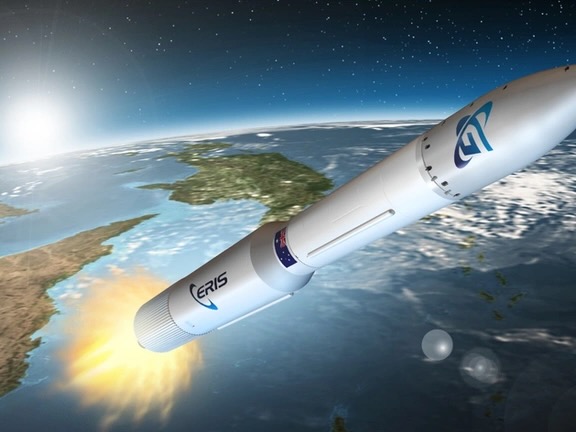
Customer Spotlight: How Gilmour Space is pioneering the future of propulsion technology
A Senior Launch Vehicle Engineer talks rocket safety and how Duro makes launches possible
We love hearing about the cool products our customers are building and how Duro transforms their work. This article is part of our Customer Spotlight blog series, where we interview engineers using Duro and share their stories with you.
We chatted with one of Gilmour Space’s Launch Vehicle Engineers to find out what the team is working on and why hybrid rockets are safer. Gilmour Space is Australia’s leading venture-capital-backed space technology company developing and launching new low-cost rockets and satellites to orbit. We learned how Gilmour uses Duro to track design changes and ensure successful launches.
What made you want to join Gilmour?
Gilmour Space started around 10 years ago and they’ve been developing various suborbital and orbital launch vehicles for the last six years. Space exploration is still relatively nascent in Australia. I didn’t realize growing up that it would be possible to work in space. Honestly, I thought it was beyond our scope as a nation and that it was only possible to work on these things in America or Europe.
That started to change in the mid-2010s and I started to consider Space Engineering a possible career. There were very few companies designing and building spacecraft, but Gilmour was one of the first to do something tangible. Prior to Gilmour, I worked at the Australian Space Agency and Gilmour was viewed as the frontrunner in building an orbital launch vehicle in Australia. That’s what got me excited about working there.
What’s your role there?
My role has been about coordinating development, assembly and test of the launch vehicle as well as ensuring that the different tools Gilmour uses are optimized to support these activities. This includes Duro, CAD software, Xero (purchasing software) and ION (First Resonance’s Factory OS). It’s about making sure our design and production data across the different systems stay in sync.
What cool projects are you currently working on?
We have two different propulsion technologies that we’ve been developing. The most unique is the hybrid rocket engine, a combination of solid rocket fuel with liquid oxidizer. Although we’ve launched solid and liquid rockets, hybrids have never gone to orbit yet so that’s been a fun challenge to work on.
Our liquid rocket engine, used in the upper stage of the current launch vehicle, the Eris Block 1 has been tested to full duration. You can watch the video of the 302 second burn. That engine is just beautiful and performant. What’s most interesting is how the propulsion technology is developed and how it’ll be a pathfinder towards bigger and better things.

How is hybrid rocket technology unique?
One of the things that I started to notice from working in the space agency was that safety is a huge concern for a flourishing industry. The challenge with liquid cryogenic fuels is that they’ve got so much explosive potential. Your exclusion zones surrounding the rocket have to be huge. Solid rocket engines are also a challenge because as soon as you start a solid rocket engine, you can’t really stop it. The oxidizer and the fuel are combined inside of the propellant. Once you light that, it just goes and, if your rocket goes out of control, there’s nothing you can do except to blow it up.
One of the uniquely advantageous things about hybrids is we can light the candle and if things aren’t going right, we can sever the feed of the oxidizer. This completely turns off the engine and when it drops back to the ground it doesn’t explode.
“Hybrids are far safer than other rocket propulsion technologies which is a huge advantage from a safety and regulatory standpoint. In Australia, the regulation environment is such an important part of R&D and testing. Having this hybrid technology has been enormously helpful in terms of getting permits and regulatory approvals.”
3D printing plays a big role in space tech today, why is it so valuable?
We use laser metal sintering to 3D print our regeneratively cooled liquid rocket engines. We use the RP1-LOX combination which is quite common in the industry. There’s a lot of research that’s gone into it and the technique is now quite mature. It works by getting a metal powder and using a laser that incrementally forms the part. The reason that it’s so valuable is the intricacy of these complex engines. When they’re regeneratively cooled, they’ve got lots of fine channels running cooling propellant through the structure to strip the heat away. Using traditional machining methods to create all those channels, it’s a much more complex and expensive process.
How has Duro transformed the way you work?
Prior to implementing the platform, we were using SharePoint as our configuration management system. It was impossible to know which was the latest revision of our components, manage changes or revert to a previous baseline.
We’ve since integrated Duro with our CAD tools so that we can promote and release designs and calculate BOM and assembly masses. Duro is our single source of truth for the state of designs. All of Gilmour’s engineering departments use Duro to collaborate and access the same product data, from design engineers (avionics, mechanical and propulsion) as well as our technicians.
It’s much simpler to review all of our changes each week before designs are moved into our production software to be built against.
“Without being able to define a baseline or manage changes to our products in Duro, we wouldn’t have the confidence in our design to be able to seek launch permission.”
Have you read or listened to anything great recently?
The Eric Burgess book, Liftoff, is really cool. It talks about the launch of the first Falcon 1 rockets which often feels very relatable for what we’re going through.
Tell me a fun fact about Gilmour
We have to watch out for crocodiles around the launch site!

Gilmour’s launch site: Bowen Orbital Spaceport, Australia

